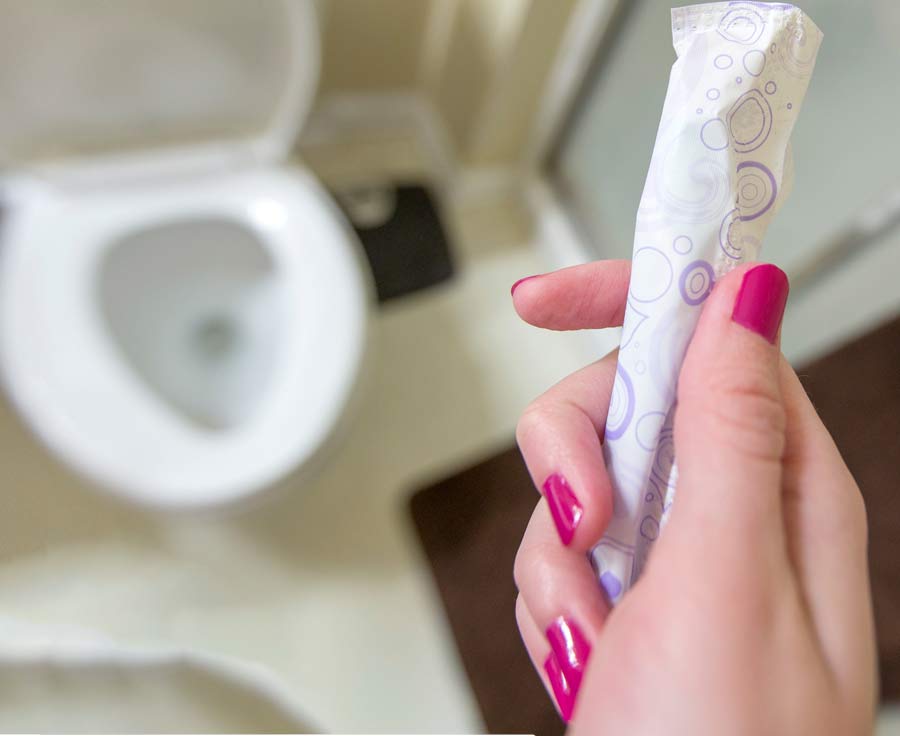Proper Tampon Disposal: Ensuring Environmental Responsibility
In today’s society, menstrual hygiene products play an essential role in women’s lives, providing comfort and convenience during their menstrual cycles. Among these products, tampons have gained widespread popularity due to their effectiveness and ease of use. However, with their increasing use, it becomes imperative to address the proper disposal of tampons to protect both our environment and plumbing systems. We will explore the importance of addressing proper tampon disposal and provide comprehensive information on safe and eco-friendly alternatives.Motherhood is a transformative voyage that brings immense delight, satisfaction, and trials. As mothers navigate through their roles, it becomes essential to prioritize their own happiness, sustainable parenting, and self-nurturing. From fostering a blissful motherhood experience to raising environmentally aware children and nurturing the caregiver within – delve into the diverse aspects of being an eco-friendly mom.

Understanding Tampons and their Composition
Tampons are cylindrical absorbent devices designed to be inserted into the vagina during menstruation. They serve the purpose of absorbing menstrual flow and providing leakage protection, allowing women to go about their daily activities with confidence. Various materials are used in tampons, including cotton, synthetic fibers, and organic alternatives.
Cotton tampons, which are widely used, offer reliable absorption and comfort. Synthetic fiber tampons, on the other hand, may provide additional benefits such as increased durability and reduced risk of fiber shedding. Moreover, there has been a growing demand for organic tampons, which are made from 100% organic cotton, free from pesticides, and are biodegradable.
Can You Flush Tampons?
It is essential to understand that tampons should never be flushed down the toilet. Although some tampon brands claim their products are flushable, it is crucial to exercise caution. Flushing tampons can lead to serious plumbing issues and environmental damage. Tampons are designed to absorb moisture and expand, which can cause blockages in plumbing pipes, leading to costly repairs.
Moreover, tampons can pose a threat to wastewater treatment facilities. When flushed, they can accumulate in sewer systems and clog pumps and filters, resulting in malfunctions and potentially releasing untreated wastewater into natural water sources. Therefore, it is vital to educate ourselves and debunk common misconceptions surrounding tampon flushability.
Safe Tampon Disposal Practices
To ensure proper tampon disposal, it is crucial to follow recommended practices. The following methods are considered safe and responsible:
- Wrapping and Disposal: After removing a used tampon, wrap it securely in toilet paper or use a disposal bag designed for feminine hygiene products. Place the wrapped tampon in a designated trash bin or a waste receptacle specifically provided in public restrooms.
- Sanitary Bins: In public restrooms, sanitary bins are often available for the disposal of tampons and other menstrual hygiene products. Make use of these bins to ensure proper and convenient disposal.
- Biodegradable Tampon Disposal Bags: Some companies offer biodegradable disposal bags specifically designed for tampons. These bags are made from eco-friendly materials and allow for discreet and hygienic disposal. Consider using them when on the go or in situations where dedicated disposal bins are not available.
Regulations and Guidelines
Different regions have specific regulations and guidelines regarding tampon disposal. In Canada, for example, tampons are classified as solid waste and should be disposed of in the garbage. It is essential to familiarize ourselves with the regulations in our respective areas and adhere to them to ensure compliance and environmental responsibility.
Various organizations and government bodies provide guidelines on tampon disposal. By following these guidelines, we can actively contribute to the preservation of our environment and the integrity of our plumbing systems. Some best practices recommended by these authorities include:
- Avoiding flushing tampons and disposing of them in waste bins or designated receptacles.
- Educating others about the importance of responsible tampon disposal.
- Supporting initiatives that promote eco-friendly alternatives.
Eco-Friendly Tampon Options
For those concerned about the environmental impact of conventional tampons, eco-friendly alternatives offer a sustainable choice. Organic tampons, made from 100% organic cotton, are free from pesticides and chemicals, making them a natural and biodegradable option. These tampons not only prioritize our health but also help reduce the burden on the environment.
Additionally, some companies offer reusable menstrual products, such as menstrual cups and period underwear. These products provide long-term sustainability and can significantly reduce waste generation associated with disposable tampons.
Why It Is Important
Addressing proper tampon disposal is crucial for preserving our environment and maintaining the integrity of plumbing systems. By understanding the materials used in tampons, the impact of flushing, safe disposal practices, and eco-friendly alternatives, we can actively contribute to a more sustainable future. Let us prioritize responsible tampon disposal, educate others, and make conscious choices to protect our environment. Together, we can create a positive change and promote the well-being of our planet.
Join us in advocating for proper tampon disposal practices. Share this article and spread awareness about the importance of responsible tampon disposal. Together, we can make a significant impact on the environment and ensure a sustainable future for generations to come.
